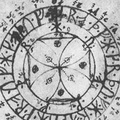Adatok
Silveryou
0 bejegyzést írt és 2 hozzászólása volt az általa látogatott blogokban.

Ekkor azonban - mint már oly sokszor - nyugtalanító gondolatok leptek meg. Kis híján elkerülte a figyelmemet, hogy egy ordító ellentmondás bújt meg a soraim között. Ez a fenti gondolatmenet ugyanis szöges ellentétben áll mindazzal, amit a korábbi fejezetekben feltártunk. Az Isten…..
Belépve többet láthatsz. Itt beléphetsz

About 2 years ago I came across a thread made by a certain KD in which he presented some kind of formula deducted by reading another famous recentist author. The formula was this one:
i = 753 + 247
where i stands for Iesus (Christ) and means 1.000, the millenium of Christ.
KD substantially took Jesus' birth as the 'middle point' obtaining two numbers: 753, date of the foundation of Rome and 247, the 'remnant' of the equation.
Now after having read this one I started thinking about what it meant.
The first thing to say about it is that the first year after this millenium is 248 AD (1001 Ab Urbe Condita), in which a certain Philip the Arab reigned. This Philip was apparently called 'the Christian' rather than the Arab until quite recently. Traditions told he was the first Roman Christian ruler. First Christian ruler or first ruler of the Christian era?
Another interesting detail is that according to Blair's Chronological Tables in the year 754 AD Pope Stephen crowns Pepin who in return will grant him the rule of the Papal States. It's the Donation of Pepin, nowadays said to be happened in 756 AD, which granted the Pope temporal sovereignity. I think it fits well with the date of 753 BC of the foundation of Rome.
Before going to the main reason I'm posting this comment, I have to say that I was not aware about the Arsakid timeline and it immediately strikes to me the fact that the sum of 248 + 248 is 496, the date in which Dionysius Exiguus went to Rome. And as a consequence the period of time of 36 years between this date and the year 532 AD is the same period intercurrent between the year 248 AD and Diocletian's ascension to the throne in 284 AD.
But here is the main reason of this comment. I hope you will find it interesting and possibly deduce something more.
A couple years ago I found that 'the Gregorian reform shortened the average (calendar) year by 0.0075 days to stop the drift of the calendar with respect to the equinoxes' (taken from wikipedia).
And 'to reinstate the association, the reform advanced the date by 10 days: Thursday 4 October 1582 was followed by Friday 15 October 1582' (from wikipedia too).
Intrigued by this reform I asked myself: why 10 days and not 15, or 5?
While reading various articles about the reform I discovered that the presumed date in which the Julian Calendar became effective was not clear and the Council of Nicaea was in fact considered the 'true' starting point of this calendar and the reason why 10 days were added.
So I started doing some easy calculations considering both the Nicaea's date of 325 AD and the date of the supposed invention of the calendar in 45 BC.
The difference between 1582 AD and 45 BC is 1627 years.
The difference between 1582 AD and 325 AD is 1257 years.
So I multiplied both number with the 0,0075 days accumulated each year from the supposed start of the Julian Calendar:
1627 years * 0,0075 days = 12,2025 days
1257 years * 0,0075 days = 9,4275 days
As you can see the date of the Council of Nicaea justifies the adding of ten days more than the date of the invention of the calendar.
But then a question arised in me. What would be the start date of the calendar in order to precisely get 10 days?
1333 years * 0,0075 days = 9,9975 days
1334 years * 0,0075 days = 10,005 days
If we subtract 1334 years from the date in which the Gregorian Calendar became effective (1582 AD), we have the date 248 AD!!!